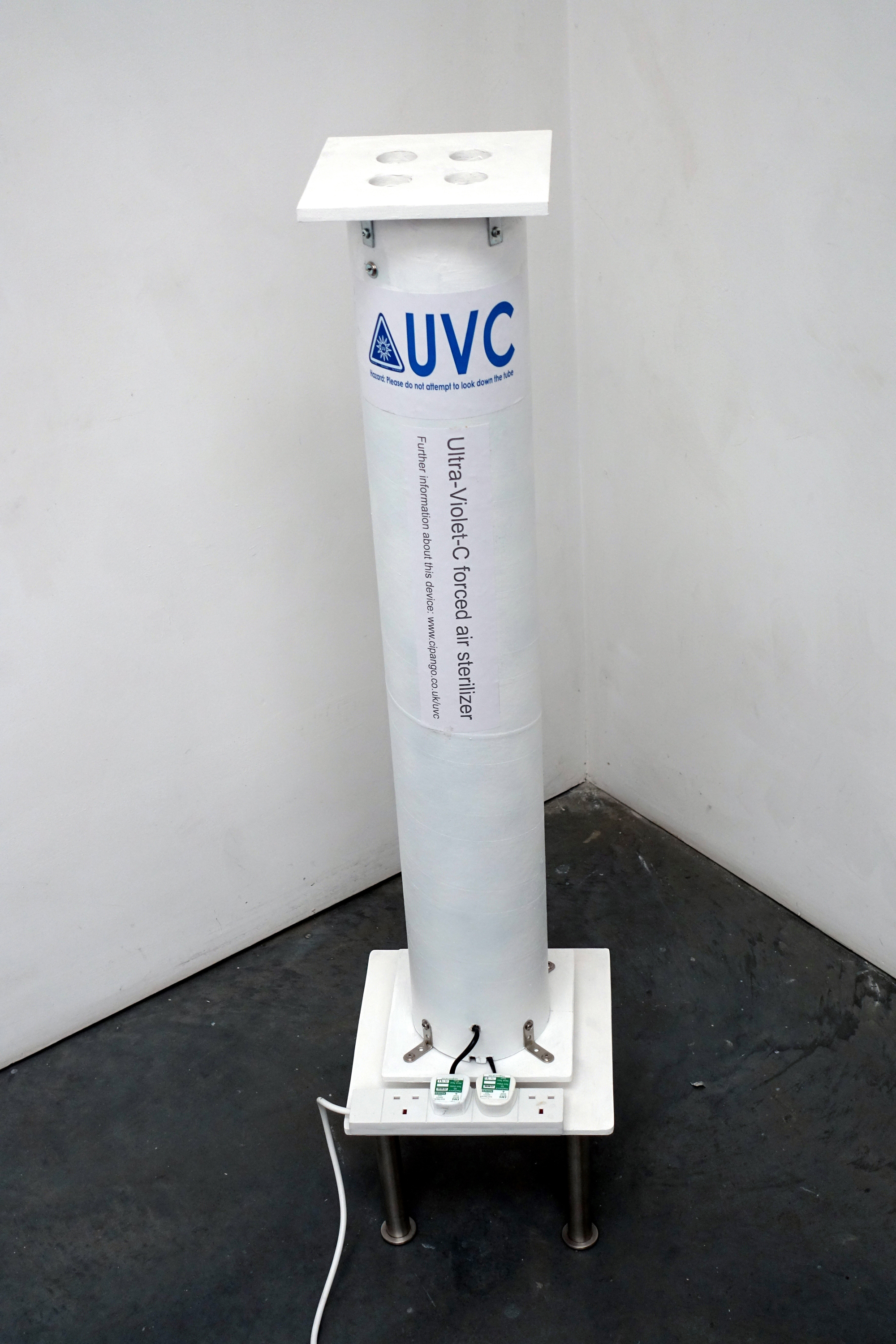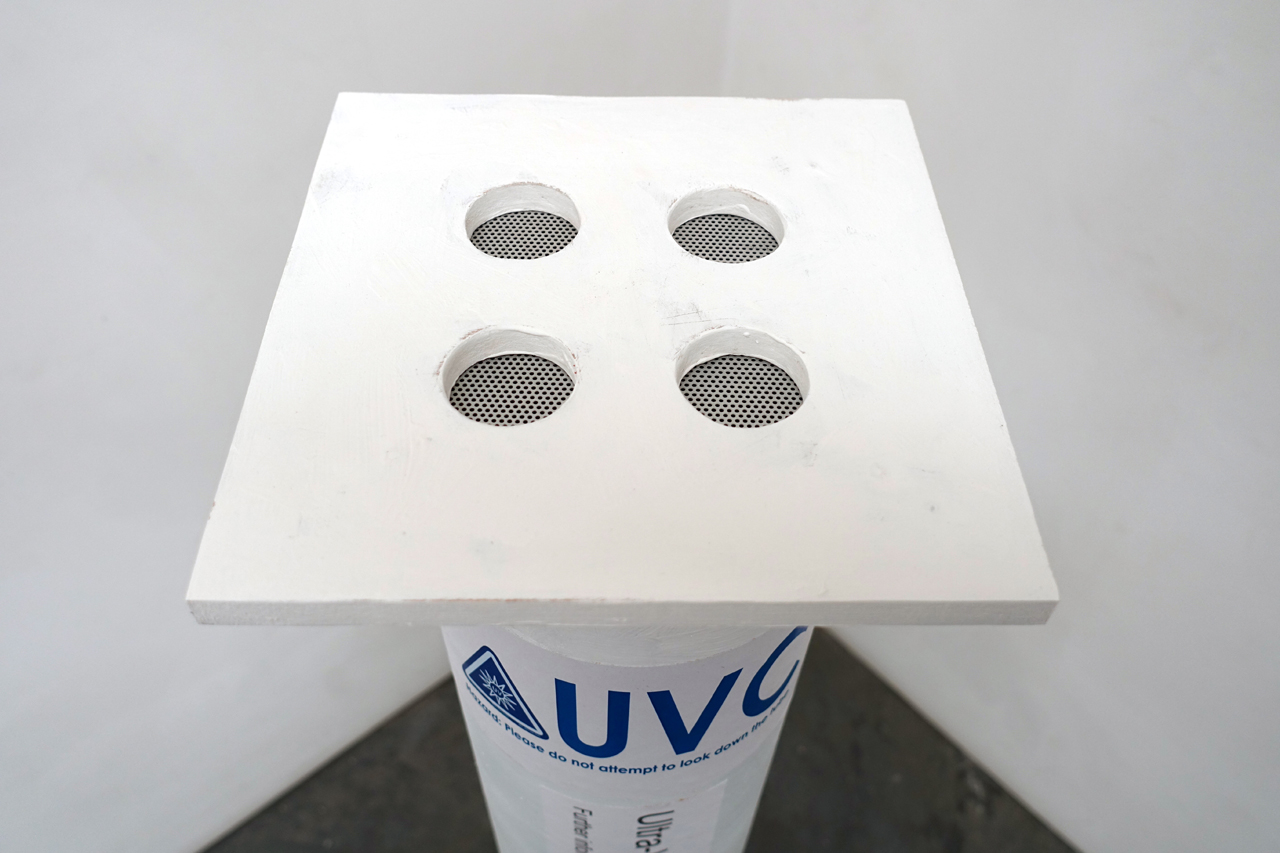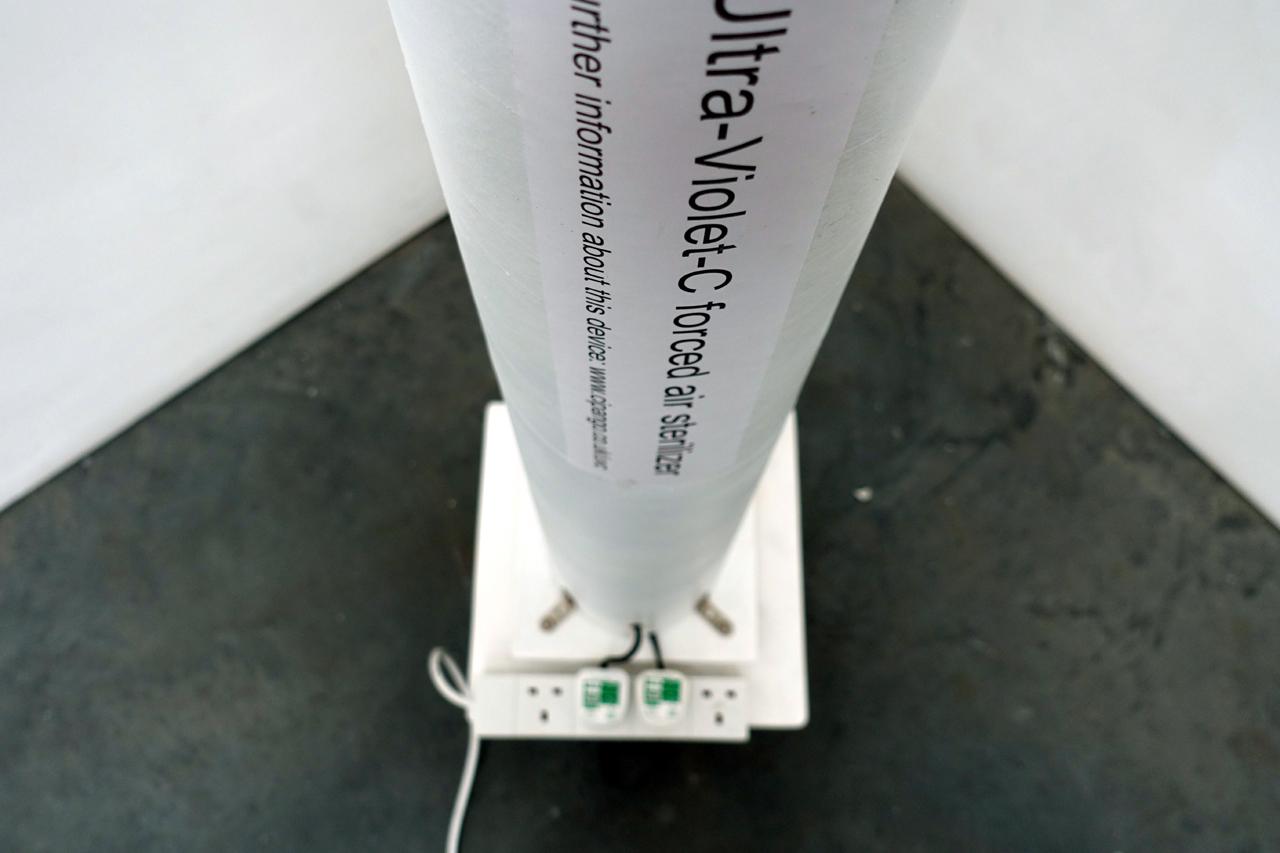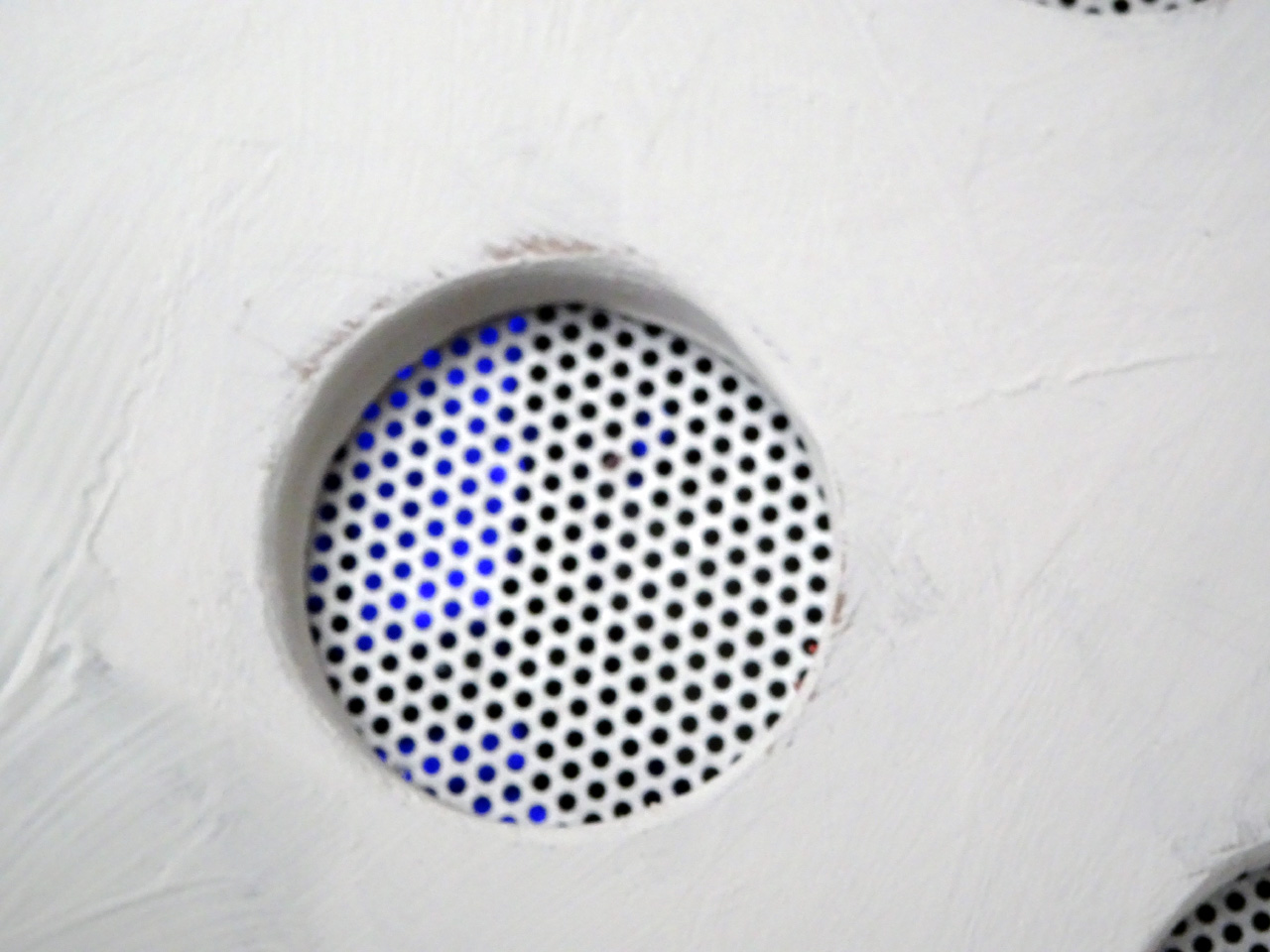
The device standing at abour 1.5 mtrs

The top where the sterilized air comes out

The base where an extension lead can be attached

Looking obliquely you can just see the UVC
Over the past 2 years the UK Government has been engaged in pathogen mitigation measures more in keeping with the 14th century than the 21st. Even if these were ever needed within the broader medical and econo-societal context, it can now be said that these have proved ineffective even on the governments own terms. This has not stopped agencies reverting to this methodology regardless. It is time to reassess and adopt more modern solutions that may have a role beyond any current concerns and that do not engage with fear-mongering or coercion.
Ultra-violet 'C' has been in use to neutralize pathogens for over 100 years. Most drinking water is sterilized using this process and it is used in medical settings. It is used on the International Space Station to sterilize the air and has been adopted by several companies mostly in the USA. On the whole these systems are costly and so far have been used in health critical environments.
What this webpage seek to convey is that there are low cost DIY UVC solutions that can be applied in less critical environments and that concern mitigation rather than elimination of pathogens. This would include restaurants, galleries, shops and other low capacity public environments. The photos on the left show a prototype that can be used for this purpose. The parts cost under £100 and it took 4 hours work to build.
I first thought of this idea in September 2020 as I was curating an exhibition and was looking for a solution to prevent the imminent venue closures. I saw an article on Saudi Airlines that was using UVC to sterilize its aircraft using a drinks trolley with 'wings' of banks of UVC lights. Honeywell subsequently developed a commercial product. I built my first prototype and approached SAGE with this solution. I did not get an encouraging response. Only in April 2021 did I hear that a member of SAGE had submitted a paper to government on the use of UVC. It can be found here - 'Evidence of environmental dispersion of COVID-19 for different mechanisms'. The relevant paragraph is 39:
39. Air cleaning technologies including ultraviolet disinfection may be a viable approach for controlling fine aerosol particles, particularly in rooms with poorer ventilation. UVGI disinfection is shown to be effective against corona viruses in air [43], and our modeling study suggests that upper-room UV installation could be equivalent to doubling the ventilation rate [44].
Note that the date of this paper is April 2020 so was available to the government early on in the crisis.
The illustrated device is motor rated at processing 1000 cu mtrs of air per hour and has a 3 second kill exposure in the tube. UVC cannot be exposed to the human eye or skin so needs to be enclosed - the pictured design achieves this. Enquiries with manufactures in the US responded that reflected UVC is not a problem in this respect; however I prefer to be cautionary. There is no maintenance, except for wear and tear, and can be deconstructed to transport. It can be positioned anywhere. The heavy elements are at the base of the device to give stability. I am working on designing a v3.0 that will have further enhancements.
Although this is a low cost device the principle could be applied elsewhere with adaptation; including but not confined to air conditioning systems in shops, offices, public transport and aircraft. I understand that such devices already exist on the commercial market. UVC222 is a new development from NASA that does not penetrate the epidermis nor the fluid layer on the eye. It is however very expensive.
Recent poster and TV adverts by the government and NHS have been emphasizing the importance of fresh air in addressing pathogens. This does conflict with the earlier lockdown advice where populations were kept indoors as a form of mitigation. It also conflicts with energy conservation / climate change advice. Destroying pathogens within indoor environments is clearly the way to go and would obviate the need for masks which suffer the same pathogen load problems.
In general, although UVC is available to the public (i.e. Ebay) there should be education on the risks of exposure especially if these devices are in publicly accessible areas.
For further information please contact Paul Malone - hello@cipango.co.uk